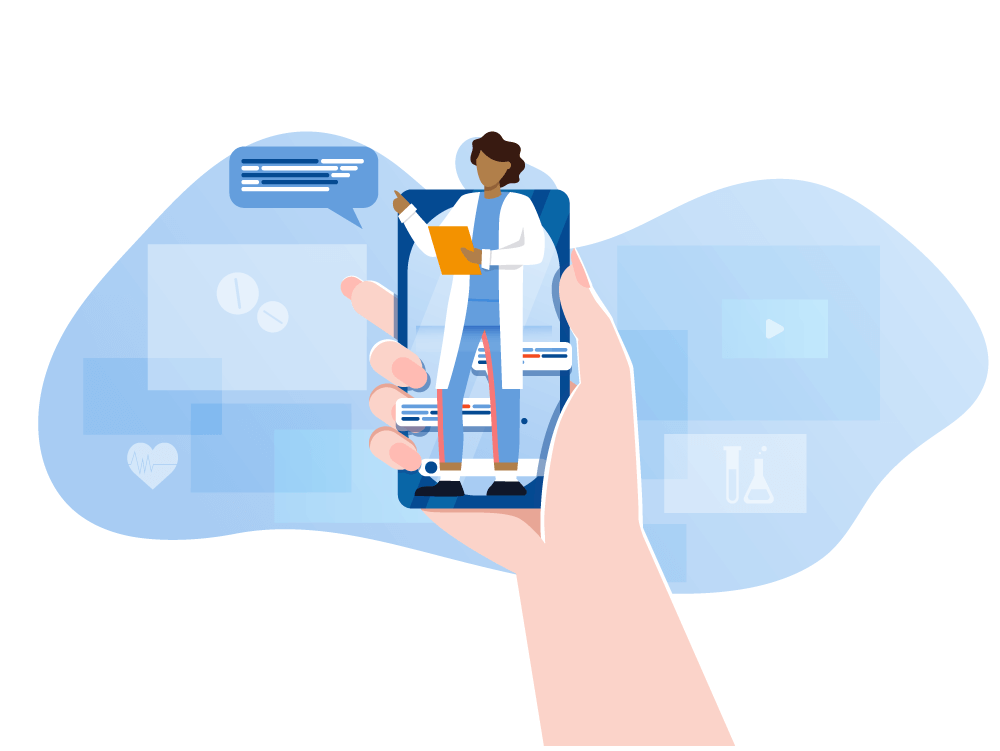As the healthcare landscape shifts during the pandemic, telehealth may experience a surge in pharmacy settings.
By Joseph A. Cantlupe
While the COVID-19 pandemic disrupted people’s lives this year, it also exposed a need for a crucial emerging tool of academic pharmaceutical instruction: telehealth. The University of the Pacific (UOP) Thomas J. Long School of Pharmacy began implementing telehealth years earlier as a key part of the interprofessional education (IPE) track to connect student pharmacists with students from other academic institutions miles away.
Through telehealth, student pharmacists are evaluating care and diving into the ins and outs of not only what it means to be a pharmacist, but also pushing themselves into multidisciplinary lessons, learning from and with nursing and medical students about clinical work and empathy and seeing patients as human beings. They are doing it not by sitting in the classroom with their peers but over videoconferencing, making true connections in remote learning spaces.
“With COVID and the shift to remote learning, we appreciate that we can still have the same experience with a person via videoconferencing technology. You can find ways of connecting without being in the same physical space,” said Dr. Deepti Vyas, associate professor at the University of the Pacific’s School of Pharmacy.
The school is home to an undergraduate Pre-Pharmacy Advantage Program, an accelerated three-year doctor of pharmacy program, a graduate pharmaceutical and chemical sciences program and several fellowship programs. The school is using telehealth through different levels of pharmaceutical training and various aspects of patient care, beginning with a telehealth IPE track, said Vyas. These telehealth programs, which are being used to prepare for future and professional collaboration, are growing.
Connecting With Providers and Patients
For the UOP School of Pharmacy, it was simply a matter of practicality that made it become an earnest driver of telehealth, as the school tried to link different campuses spread out many miles apart. “We had to think of a modality linking medical and nursing students with our pharmacy students,” Vyas said. “That’s why the telehealth track was born here. We use a real-life practice model so students can have a better understanding of telehealth and what they can offer in the future to connect with patients in remote locations.”
The school has a range of telehealth programs including IPE collaborations, introductory pharmacy practice experiences and outreach events using telehealth principles, Vyas said. The telehealth IPE track includes relationships between UOP and other academic institutions, including the University of Missouri-Kansas City (UMKC) School of Nursing, the Arkansas College of Osteopathic Medicine (ARCOM) and the West Virginia School of Osteopathic Medicine (WVSOM). They use a wide swath of simulations, each with a different focus of instruction, preparing students to address myriad patient health issues, such as drug interactions, cardiac concerns or psychiatric illness. They work with nurse practitioner and medical students to learn about various therapeutic plans. The programs reach deep into different areas of healthcare to expose students to richer and more advanced clinical experiences, Vyas said.
The collaboration with UMKC includes pairing second-year student pharmacists with UMKC’s psychiatric mental health/family practice nurse practitioner students, focusing on the management of complex psychiatric disorders including schizophrenia, substance use disorders, bipolar disease, Alzheimer’s disease and other chronic conditions. “[The University of Missouri-Kansas City] was very interested in using telehealth principles to link their students with ours. This was our third go-around and it was very successful,” she said.
Being paired with the nurse practitioner students was a tremendous boost in the instruction process, she added. “The nurse practitioner students provided a much-needed experience for our students. A major learning tool emerged, which was empathy development.” Not only did students focus on the clinical management of the patient, they also discussed the social barriers faced by the patient. This helped highlight the human aspect of healthcare.
According to an abstract on the UOP-UMKC relationship that Vyas co-authored, the telehealth program developed with different kinds of diagnoses and patient assessments, as well as aspects of care. Student team leaders were responsible for giving point-by-point instructions during the telehealth programs and scheduling videoconferencing. During one academic year, 140 teams were created with 28 psychiatric mental health nurse teams paired up with more than 200 student pharmacists. Students reported improved attitudes toward interprofessional collaboration.
In a similar telehealth program involving the WVSOM, second-year UOP student pharmacists were paired with medical students on their clinical clerkships. Students received a patient’s chart in a simulated electronic health record program and a video depicting a physical assessment to obtain patient information. Students then used the SBAR tool to collaborate on the care of an acutely ill patient.
The UOP telehealth program is detailed and complex, said Vyas, including simulated patients’ lab reports, medical histories, allergies and imaging, notes and records of previous doctor visits—the full scope of what would typically appear in a patient’s chart, she said. The team used YouTube video physical assessments to analyze each patient’s condition. As students worked toward resolving each patient case, the groups leaned on each other, the medical students relying on the student pharmacists and vice versa.
The Post-Pandemic Outlook for Telehealth
As the University of the Pacific continues to expand its telehealth programs, it comes at a time when the potential for such programs seems limitless. Across the healthcare landscape, telehealth is being widely adopted. The marketing firm Frost & Sullivan reports a projected growth in telehealth of 64.3 percent by the end of 2020 and an estimated sevenfold increase by 2025.
Other studies confirm the growth potential. In July, the U.S. Department of Health and Human Services released a report showing “dramatic utilization trends of healthcare services in primary care delivery in fee-for-service Medicare in the early days of the COVID-19 pandemic.” HHS noted that an internal Centers for Medicare & Medicaid Services (CMS) analysis found that before the public health emergency, only 14,000 beneficiaries received telehealth services, but during the pandemic from mid-March to early July, more than 10.1 million beneficiaries received telehealth services.

